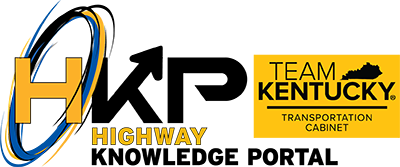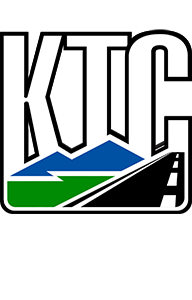Search for articles or browse our knowledge portal by topic.
Understanding the Construction Contract

The construction contract is created from several KYTC documents. This article reviews content typically found in contract documents, their hierarchy, and sources of additional information.
A construction contract contains more than a set of plans, proposal, and signed contract document. It may include multiple documents. This section briefly introduces the features of different contract documents.
During each month’s letting, bidders can seek clarification on project details by submitting questions to the Division of Construction Procurement. KYTC’s answers are considered part of the Special Note for Project Questions During Advertisement found in the contract proposal and supersede all other contract documentation. All questions and answers are posted on the Division of Construction Procurement’s website (under the Lettings section).
Communicating All Promises (CAP) is a document included in the contract proposal created during project development to ensure commitments made to stakeholders (e.g., property owners, utility companies, other agencies) are known to contractors and KYTC construction staff. CAPs are not prepared for every project, but a proposal should be reviewed in detail to ensure any promises made are honored during construction.
The proposal details pertinent information about the project and is divided into five parts:
- Part I Scope of Work
- Part II Specifications and Standards Drawings
- Part III Employment, Wage and Record Requirements
- Part IV Insurance
- Part V Bid Items
Section 3 provides details on information included in each part of the proposal.
Proposals often include special notes, however, in some cases proposals only contain references to special notes. When reviewing the proposal, identify all Special Notes / Special Provisions (in the proposal or applicable notes on KYTC’s website) prior to the pre-construction meeting.
Plans are 2D representations of the design intent provided to contractors and KYTC construction staff to build a project. Not all projects require plans. Some will only have a proposal, such as resurfacing or Highways Safety Improvement Program (HSIP) project. Other project types, like a grade and drain or a structure project will include a plan set along with a proposal. A plan set may include the following sheets:
- Plan View
- Profile View
- Drainage
- Structure
- Traffic
- Utility
- Coordinate Control
- Cross-Section View
Standard Drawings and Sepias are collections of detailed instructions on the proper installation of typical construction project bid items, such as guardrail end treatments, ADA sidewalk ramps, and inlaid pavement markings. There are dedicated webpages for Standard Drawings and Active Sepias.
The Standard Specifications for Road and Bridge Construction (Spec Book) provides detailed information on construction project management. It is divided into eight Divisions and addresses items such as general provisions of a project, methods to measure a pay item, and the fuel price adjustment formula. The Standard Specifications webpage houses all versions of the Spec Book issued from 2004 through today.
Sometimes there are one or more discrepancies between contract documents. Section 105.05 of the Spec Book lists a governing ranking that should be adhered to when resolving discrepancies:
- Questions and Answers from the Division of Construction Procurement Website
- Communicating All Promises (CAP) Report (found in the Proposal).
- Proposal
- Special Notes and Provisions – May be in the Proposal or found on KYTC’s Website.
- Plans
- Standard Drawings and Sepias
- Standard Specifications
An example illustrates the practical implications of this ranking. Suppose that information in a proposal conflicts with information in a set of plans. Information in the proposal supersedes information in the plans because the proposal occupies a higher position in the governing ranking.
Table 1 lists content found in a proposal. This list is not comprehensive. Rather, it highlights general information commonly included in a proposal.
What content a proposal includes varies by project type (e.g., resurfacing, grade and drain, bridge repair, federally funded, state funded).
| Table 1 Proposal Content | ||
| Section | Content | |
| Cover Sheet |
|
|
| Part I Scope of Work |
|
|
| Part II Specification and Standard Drawings |
|
|
| Part III Employment, Wage and Record Requirements |
|
|
| Part IV Insurance |
|
|
| Part V Bid Items¹ |
|
|
¹Bid items may be categorized by project location, such as county if it is a multicounty project, or structure if the project has multiple structures.
When unforeseen issues in the field or omissions in the plan set or the proposal emerge during construction, a change order is used to address the time, material, and cost necessary to provide the work. Upon approval, change orders become part of the contract document. As such, they should be written in a professional style, using Active voice. Further Change Order information can be found on the Construction Change Orders webpage.
Visit the Construction Memorandums webpage for updates to construction items issued by the Director of Construction. The webpage organizes memorandums by their year of issue. Construction Memorandums are not Contract Documents, but guidance and best practices for Department personnel.
Supplemental Specifications are updates to the Standard Specifications published between complete revision releases of the Spec Book. Visit the Supplemental Specifications webpage to retrieve updated specifications. The webpage also lists letting dates on which the Supplemental Specifications took effect. An update only applies to projects in that letting and subsequent lettings.
A construction revision may be needed to accompany change order items. Once approved by the KYTC Project Team, the construction revision cover sheet and revised plan sheet(s) become part of the contract. The following signatures are required to approve a construction revision:
- Submitted By: Project Engineer
- Recommended By: Chief District Engineer
- Recommended By: Director of Construction
- Approved By: Executive Director for Project Delivery
6.KYTC Reference Documentation
– Change Orders https://transportation.ky.gov/Construction/Pages/Change-Orders.aspx
– Construction Memorandums https://transportation.ky.gov/Construction/Pages/Construction-Memorandums.aspx
– Special Notes / Special Provisions https://transportation.ky.gov/Construction/Pages/Special-Notes-Special-Provisions.aspx
– Standard Drawing and Active Sepias https://transportation.ky.gov/Highway-Design/Pages/Standard-Drawings.aspx
– Standard Specifications for Road and Bridge Construction https://transportation.ky.gov/Construction/Pages/Kentucky-Standard-Specifications.aspx

